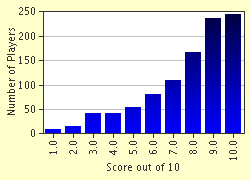Quiz Answer Key and Fun Facts
1. The world of organic chemistry is vast, simply because carbon has the property of easily being able to form bonds with other carbon atoms, creating a wide range of molecules of various levels of complexity. What is this property of carbon called?
2. As is obvious from the name, 'hydrocarbons' are compounds which contain only carbon and hydrogen. Hydrocarbons are of two types- open-chained and close-chained, of which open-chained hydrocarbons are more commonly found.
Close-chained (or cyclic) hydrocarbons containing alternating single and double bonds are generally known to have intense smells, which led to this class of compounds being given a special name. What is this name?
3. Moving on to open-chain hydrocarbons now- in saturated hydrocarbons is it true that all the bonds between carbon atoms are single bonds only?
4. Which hydrocarbon, with the formula 'CH4', is the simplest alkane?
5. Alkanes all have a certain 'general' or 'skeleton' formula: Suppose the number of carbon atoms in an alkane is 'n', what is the formula of that hydrocarbon?
6. The common names of alkanes, alkenes and alkynes, all begin with certain prefixes, depending on the number of carbon atoms present in them. For example, when there is 1 carbon atom present, the prefix given is "meth-". When there are 2 carbon atoms, the prefix given is "eth-", and when there are 3 carbon atoms, the prefix "prop-" is attached. What is the prefix when there are *4* carbon atoms present?
7. The tricky part of hydrocarbon-nomenclature is when you come across molecules with the same molecular formula, yet different structure! Even though such compounds have the same chemical formula, the arrangement of atoms within one molecule can be different, altering the properties completely! What are these compounds called?
8. Which of the following chemical formulae does NOT represent an alkene?
9. Carbon has the unique ability to form long chains with other carbon atoms. What name is given to a long chain consisting of many identical smaller molecules (called monomers)?
10. What is the atomic number of carbon? (Remember, its valency is 4.)
Source: Author
achernar
This quiz was reviewed by FunTrivia editor
crisw before going online.
Any errors found in FunTrivia content are routinely corrected through our feedback system.


